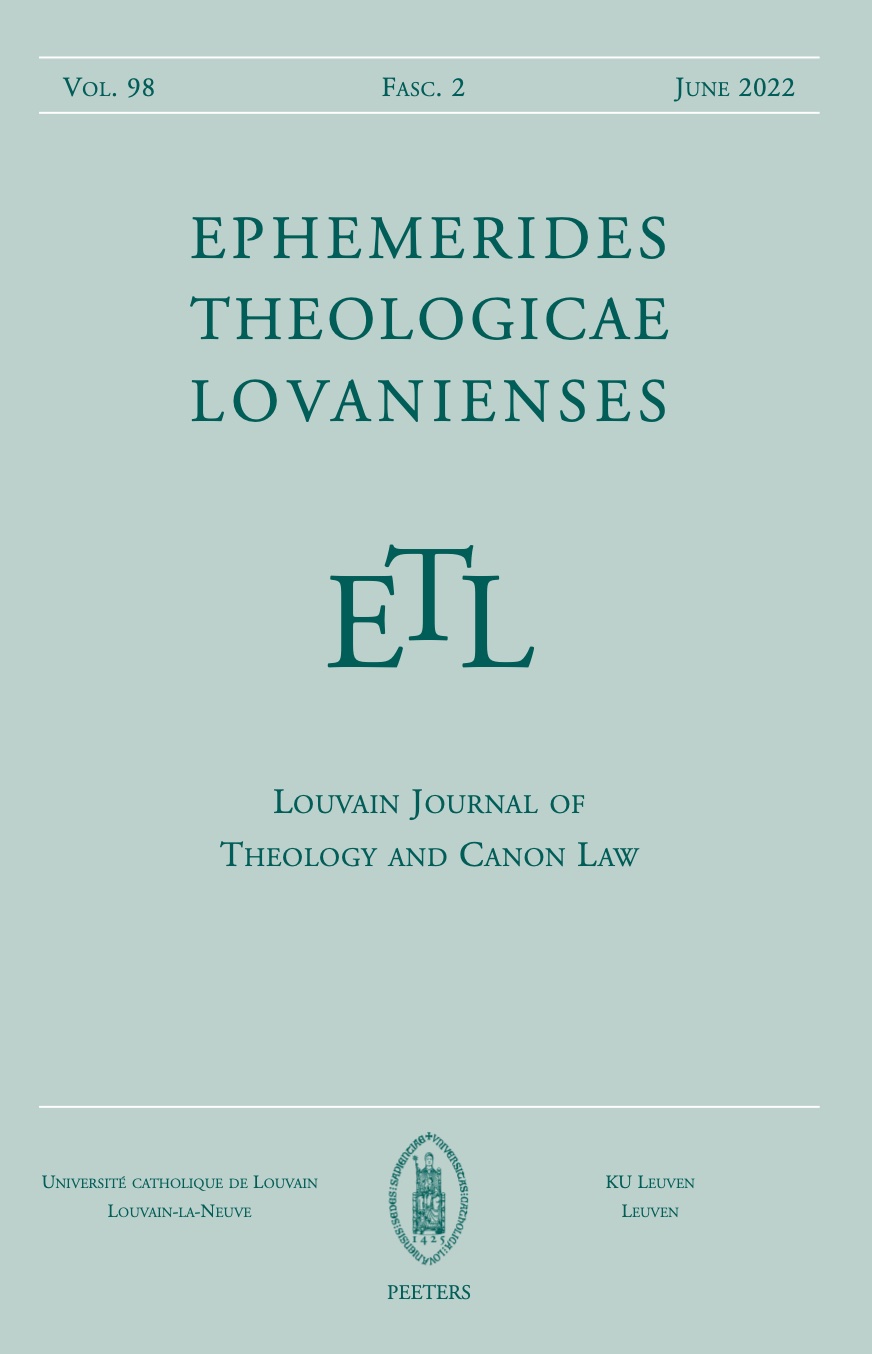next article in this issue  |

Preview first page |
Document Details : Title: The New Jerusalem Subtitle: A Metaphor for Deification in the Commentaries on Revelation by Oecumenius and Andrew of Caesarea Author(s): BETZ, Nathan Journal: Ephemerides Theologicae Lovanienses Volume: 96 Issue: 1 Date: 2020 Pages: 1-39 DOI: 10.2143/ETL.96.1.3287374 Abstract : Late antique teaching on deification and the patristic reception of the Book of Revelation are two topics that have attracted focused attention in recent scholarship. In this article, I draw these two topics together by investigating the New Jerusalem as it appears in Rev 21,1-22,5 and its significance as a metaphor for deification in the Revelation commentaries of the two earliest known writers to have composed full surviving commentaries of the book in Greek – the late-sixth and early-seventh-century exegetes Oecumenius (Commentarius in Apocalypsin) and Andrew of Caesarea (Commentarii in Apocalypsin). I argue that these two neglected but influential commentators, departing from dominant strands of earliest Christian tradition, interpret Revelation’s final great symbol not only spiritually but inter-personally, that is, as a representation of God and human beings in close relation with one another. Moreover, they represent the New Jerusalem as a grand and complex metaphor that bespeaks nothing less than the deification of the virtuous and thus the mystical union of God and humanity. The authors conceptualize this deifying union as indwelling union, participatory union, and synergistic union. They also demonstrate it using two metaphors that appear in connection with Revelation’s New Jerusalem pericope: the matrimonial union of Christ with his bride and the vision of God by the blessed. Finally, I suggest three reasons why Oecumenius and Andrew might have adopted a deification-oriented interpretation of the holy city. |
|


